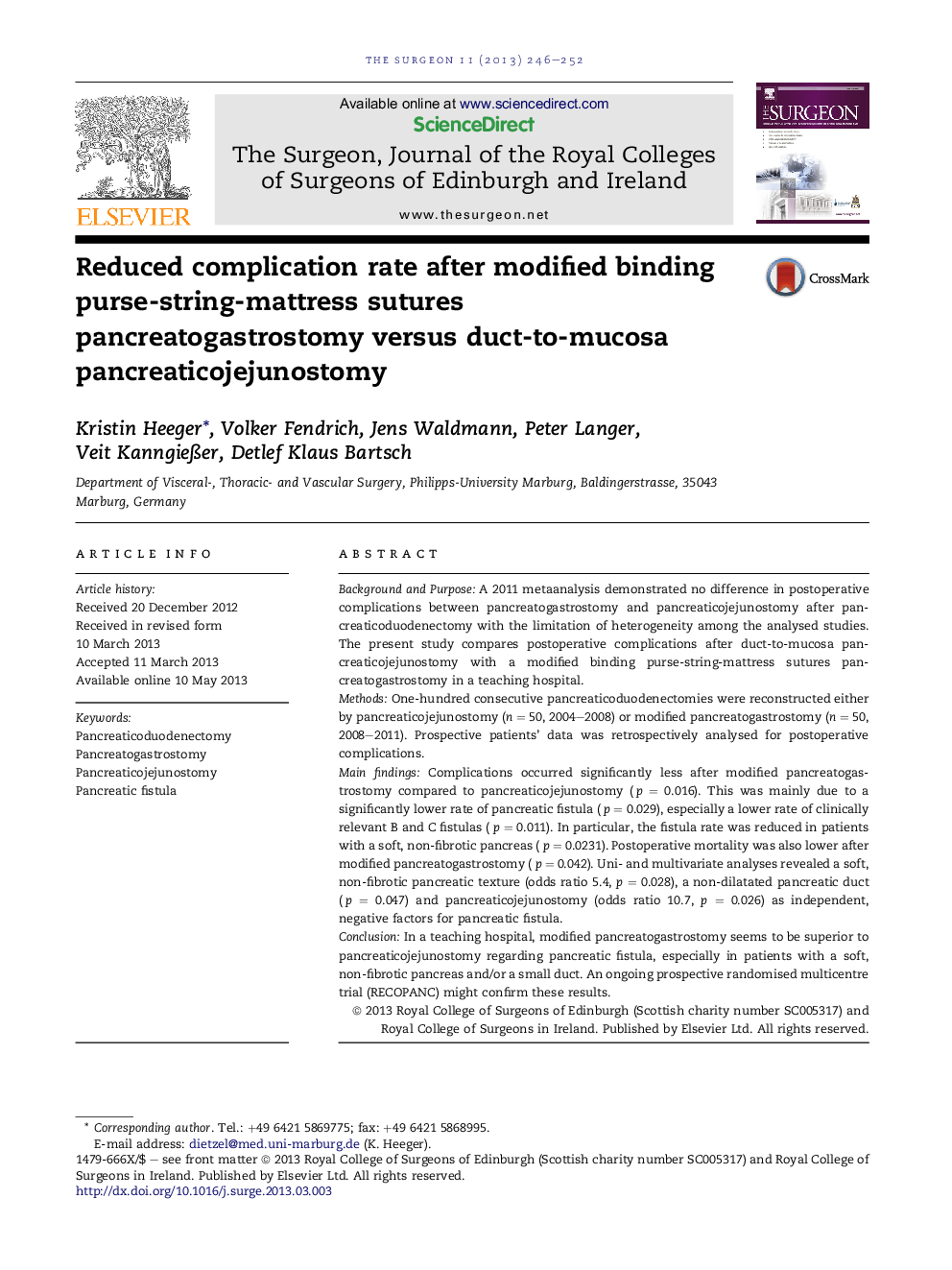| Article ID | Journal | Published Year | Pages | File Type |
|---|---|---|---|---|
| 3178530 | The Surgeon | 2013 | 7 Pages |
Background and PurposeA 2011 metaanalysis demonstrated no difference in postoperative complications between pancreatogastrostomy and pancreaticojejunostomy after pancreaticoduodenectomy with the limitation of heterogeneity among the analysed studies. The present study compares postoperative complications after duct-to-mucosa pancreaticojejunostomy with a modified binding purse-string-mattress sutures pancreatogastrostomy in a teaching hospital.MethodsOne-hundred consecutive pancreaticoduodenectomies were reconstructed either by pancreaticojejunostomy (n = 50, 2004–2008) or modified pancreatogastrostomy (n = 50, 2008–2011). Prospective patients' data was retrospectively analysed for postoperative complications.Main findingsComplications occurred significantly less after modified pancreatogastrostomy compared to pancreaticojejunostomy (p = 0.016). This was mainly due to a significantly lower rate of pancreatic fistula (p = 0.029), especially a lower rate of clinically relevant B and C fistulas (p = 0.011). In particular, the fistula rate was reduced in patients with a soft, non-fibrotic pancreas (p = 0.0231). Postoperative mortality was also lower after modified pancreatogastrostomy (p = 0.042). Uni- and multivariate analyses revealed a soft, non-fibrotic pancreatic texture (odds ratio 5.4, p = 0.028), a non-dilatated pancreatic duct (p = 0.047) and pancreaticojejunostomy (odds ratio 10.7, p = 0.026) as independent, negative factors for pancreatic fistula.ConclusionIn a teaching hospital, modified pancreatogastrostomy seems to be superior to pancreaticojejunostomy regarding pancreatic fistula, especially in patients with a soft, non-fibrotic pancreas and/or a small duct. An ongoing prospective randomised multicentre trial (RECOPANC) might confirm these results.
